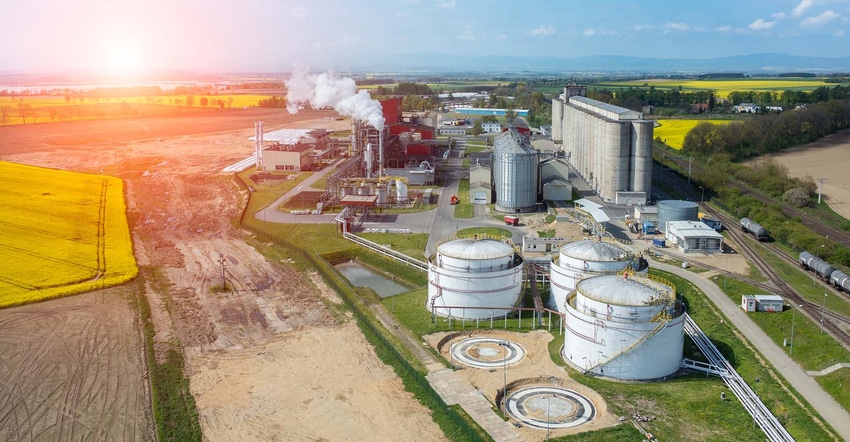June 22, 2020

The U.S. ethanol industry will need to transform its business model to create more value and improve its operational efficiency as it copes with reduced demand and excess production capacity, according to a new report from CoBank's Knowledge Exchange. The report says that consolidation within the industry will lead to larger, more financially stable companies with diversified ethanol co-product offerings by 2025.
“While ethanol remains an attractive business with long-term potential, the industry will need to evolve and diversify beyond fuel ethanol,” said Kenneth Scott Zuckerberg, CoBank’s lead grain and farm supply economist. “That diversity will need to include higher margin co-products like high-protein distillers grains for animal feed, liquid carbon dioxide for refrigeration, beverage grade alcohol, and other industrial products.”
The economic shock from COVID-19 business shutdowns and stay-at-home restrictions caused significant ethanol demand destruction. The battering continued with the crude oil and gasoline supply shock led by Saudi Arabia and Russia. U.S. ethanol production dropped almost 50% from mid-March to mid-April.
At the beginning of 2020, the U.S. ethanol industry had 1 billion gallons of excess capacity, which is projected to rise to 3.9 billion by the end of 2020, before settling to 2.4 billion by the end of 2021.
Strong export growth would help reduce the excess nameplate capacity, but current projections do not support such an outcome. Declining exports to Brazil and Canada caused last year’s 23% drop in net exports. Net ethanol exports are expected to drop by 21% in 2020 and then grow by 31% in 2021, based on analysis by The ProExporter Network. While favorable, the export growth rate in 2021 equates to only modest growth compared to 2019 and would be well below the peak of net exports in 2018.
Brazil has also emerged as a formidable export competitor that is claiming U.S. global ethanol market share. Brazil’s weak currency and access to cheap sugar have strengthened its position as an ethanol exporter.
Industry margins
While ethanol industry margins have been low in recent years, top-tier operators have continued to earn attractive margins and many middle-tier operators have produced positive margins over the past five years.
These operators’ margins have been driven by their close proximity to corn, their ability to opportunistically buy basis cheap and their use of advanced processing and fermentation technologies to drive higher yields. Declining input costs for corn and natural gas have also helped operating margins.
In recent years, co-products have helped ethanol producers by providing revenue and margin diversification. In 2019, the U.S. ethanol industry generated nearly 40 million metric tons of additional co-products beyond ethanol fuel in the form of distillers grains, gluten feed and gluten meal for use in animal feed.
Ethanol plants also extracted 3.8 billion pounds of corn distillers’ oil used in the production of biodiesel and other animal feed and captured 5.8 billion pounds of high-grade biogenic carbon dioxide sold to food, beverage, and industrial customers principally in North America.
“The growth opportunity for ethanol producers is to expand co-product offerings and open new markets by fine-tuning those products,” said Zuckerberg. “The products are less commoditized and offer higher margins than fuel ethanol, while providing revenue and earnings diversification.”
As the industry transforms, weaker players with less efficient technology, higher leverage, high operating costs, and an inability to attract new investment capital will likely be forced to exit through consolidation or plant closures.
Source: CoBank, which is solely responsible for the information provided and is wholly owned by the source. Informa Business Media and all its subsidiaries are not responsible for any of the content contained in this information asset.
You May Also Like




